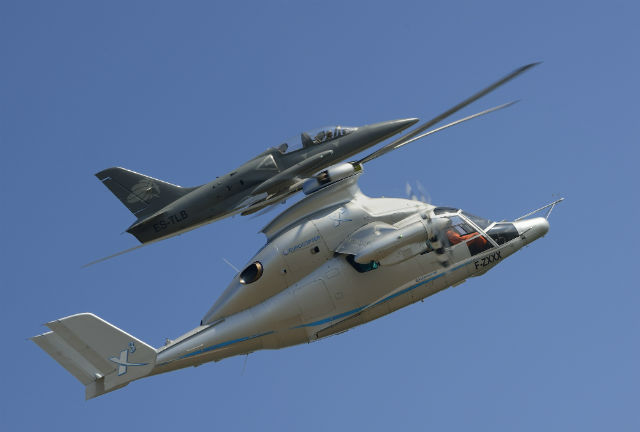Airbus Helicopters will reveal at next week’s ILA Berlin air show its initial concept for a 220kt (410km/h)-cruise helicopter developed under the EU-backed Clean Sky 2 effort.
A preliminary design review was scheduled for the programme in late 2015, according to documents associated with the research.
The airframer launched its involvement in the high-speed rotorcraft project at the 2014 Farnborough air show under the LifeRCraft (low-impact, fast and efficient rotorcraft) banner. It is envisaged as a successor to its record-breaking X3 high-speed demonstrator, which last flew in 2013 having achieved speeds of 255kt in level flight.

Airbus Helicopters
According to the details of a stakeholder presentation in March, overall responsibility for the development will be split between various parts of the Airbus Helicopters operation, with its site in Donauwörth, Germany in charge of the main fuselage and wings. Rotors – main and lateral – will be handled by its Le Bourget, France blade facility, and the tail boom and its control surfaces prepared by its factory in Albacete, Spain.
However project management, integration and ground- and flight-test activities will be carried out at the company’s headquarters in Marignane, France, the document indicates.
That workshare appears to conform to the airframer’s new industrial model – unveiled in March – which divides sub-assembly activities across its four main plants.
Three sub-projects have been allocated €3.25 million ($3.62 million) under the most recent round of EC proposals. These include two work packages headed by Airbus Helicopters Deutschland, which will develop the canopy structure and engine compartments – comprising the cowlings, exhaust ejector and air intakes – for the demonstrator aircraft. GE Aviation-owned Avio Aero, meanwhile, will lead an effort to “define an advanced health monitoring system” for the lateral gearboxes and main gearbox reduction stages.
The document indicates Romania’s INCAS aerospace research agency is responsible for leading manufacturing work on the fuselage, which should be an “advanced composite or hybrid metallic/composite structure”.
Separately, Airbus Helicopters Deutschland appears to have been quietly working on designs for a future compound rotorcraft, according to newly-released patent documents.
Filed in July 2013 and granted by the US Patent Office on 26 April, the submission covers a number of configurations. All feature a joined or box-wing design on the side of the aircraft – a main lower wing including ailerons and a secondary upper wing – and pusher propellers. Driveshafts from the main engine are contained within the upper wing.
Possible alternatives include the main engines being located at the wing-join point and the addition of nose-mounted canards to increase lift, enabling the main wing and propellers to be moved rearwards.
Aft-located engines, particularly in a pusher configuration, appear the favoured approach as they cut noise, improve cabin safety in the event of a blade loss, and “keep the boarding area free of rotating devices”, says the patent application.
Source: FlightGlobal.com






















